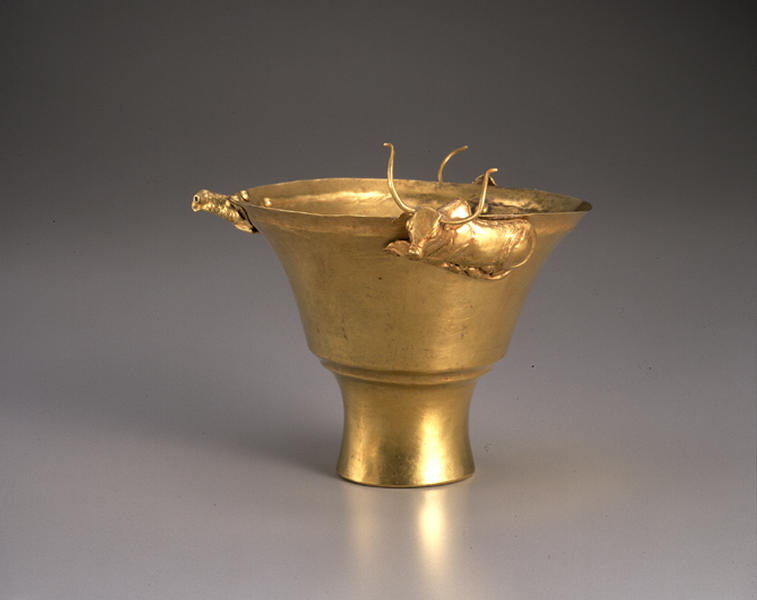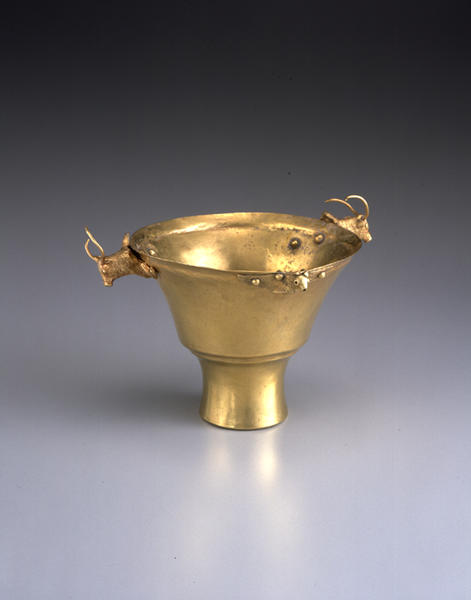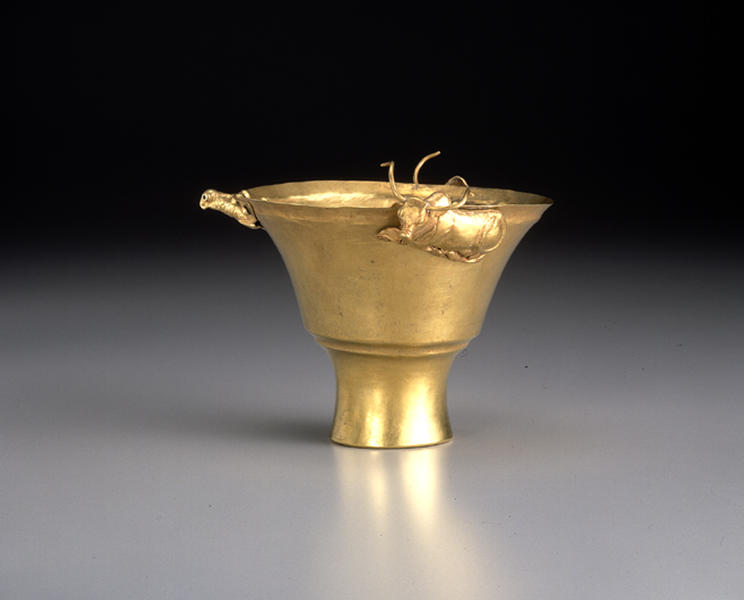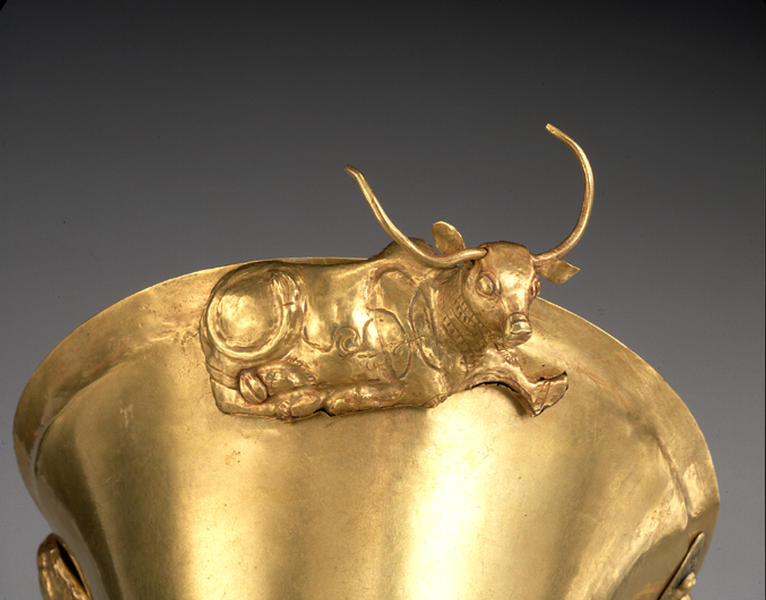Goblet with Vulture and Bulls
- Northern Afghanistan
- Late 3rd - early 2nd millennium B.C.
- Electrum
- H-9.5 D-12
Catalogue Entry
Electrum and silver goblets which have a carinated and smooth profile are thought to be from Bronze Age Bactrian culture. They are paralleled by silver vessels of the "Fullol hoard" and similarly shaped pottery excavated at various sites in western Central Asia. The vessel is hammered out of one piece of metal, of which the main part is divided by carination into the cup and the foot. On the wide rim, there are attached a vulture with outspread wings, and two reclining bulls facing out on opposite sides of the goblet.
The legs of the bird are held up to its chest, and the truncated tail is visible below. The posture of the vulture, with wings spread and legs tucked under its body, has an extremely long history in Iranian art.*1 The bird has feather patterns incised on the neck, chest, and wings. It is fixed with four round-headed rivets, two on each side of the neck and wings, visible from both inside and outside the vessel. Two bulls were hammered in high relief over a core, and then backed by a flat sheet of metal that was folded over the edge. Two round-headed rivets for each bull can be seen on the inside of the cup. The bodies of the bulls are attached obliquely according to the placement of the rivets, and the heads are at a three-quarter angle to the body. The limbs are bent beneath the bulls, and the sexual organs are prominently displayed between the hindlegs. Details of the oval eyes, the nose and mouths, the musculature of the foreleg and rump areas, hatched bands on the neck, and the horizontally placed S-spirals on the belly of each animal have been incised.
There are very few examples of goblets with rim attachments; the only other comparable example is an electrum goblet in the Metropolitan Museum.*2 Although the bird and bulls do not perfectly fit the contours of the goblet, the presence of rivets on the inside, which appear to be of ancient manufacture, suggests that they were attached at some period in antiquity.



